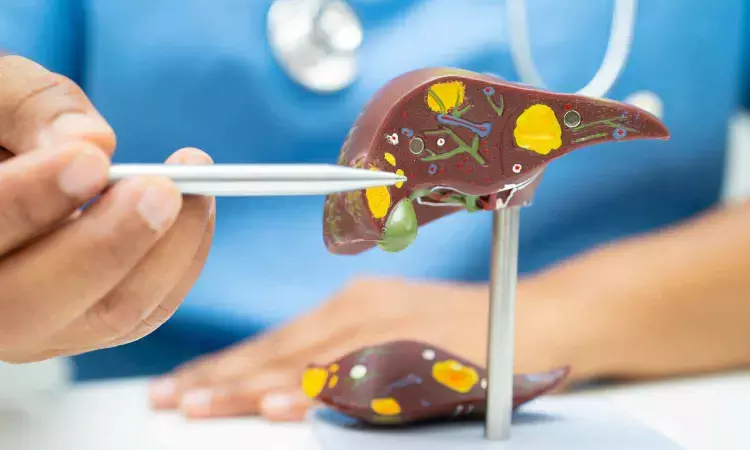- Home
- Medical news & Guidelines
- Anesthesiology
- Cardiology and CTVS
- Critical Care
- Dentistry
- Dermatology
- Diabetes and Endocrinology
- ENT
- Gastroenterology
- Medicine
- Nephrology
- Neurology
- Obstretics-Gynaecology
- Oncology
- Ophthalmology
- Orthopaedics
- Pediatrics-Neonatology
- Psychiatry
- Pulmonology
- Radiology
- Surgery
- Urology
- Laboratory Medicine
- Diet
- Nursing
- Paramedical
- Physiotherapy
- Health news
- Fact Check
- Bone Health Fact Check
- Brain Health Fact Check
- Cancer Related Fact Check
- Child Care Fact Check
- Dental and oral health fact check
- Diabetes and metabolic health fact check
- Diet and Nutrition Fact Check
- Eye and ENT Care Fact Check
- Fitness fact check
- Gut health fact check
- Heart health fact check
- Kidney health fact check
- Medical education fact check
- Men's health fact check
- Respiratory fact check
- Skin and hair care fact check
- Vaccine and Immunization fact check
- Women's health fact check
- AYUSH
- State News
- Andaman and Nicobar Islands
- Andhra Pradesh
- Arunachal Pradesh
- Assam
- Bihar
- Chandigarh
- Chattisgarh
- Dadra and Nagar Haveli
- Daman and Diu
- Delhi
- Goa
- Gujarat
- Haryana
- Himachal Pradesh
- Jammu & Kashmir
- Jharkhand
- Karnataka
- Kerala
- Ladakh
- Lakshadweep
- Madhya Pradesh
- Maharashtra
- Manipur
- Meghalaya
- Mizoram
- Nagaland
- Odisha
- Puducherry
- Punjab
- Rajasthan
- Sikkim
- Tamil Nadu
- Telangana
- Tripura
- Uttar Pradesh
- Uttrakhand
- West Bengal
- Medical Education
- Industry
Tirzepatide- A novel therapeutic against metabolic dysfunction-associated steatotic liver disease, reports research

Metabolic dysfunction-associated steatohepatitis (MASLD) is a liver disease with complex pathogenesis, characterized by abnormal lipid accumulation within hepatocytes, inflammation, and fibrosis. Its increasing incidence in recent years constitutes a serious public health concern, underscoring the need for identifying therapeutics that can improve hepatic lipid metabolism, alleviate liver burden, and reverse or mitigate disease progression.
In a recent study published in the Genes & Diseases journal, researchers at Chongqing Medical University and University College London investigated the therapeutic efficacy of tirzepatide, a dual GIP/GLP-1 receptor agonist, on MASLD and elucidated the molecular mechanisms underlying its inhibitory effect.
Tirzepatide administration was shown to alleviate hepatic steatosis in mouse models of MASLD induced by high-fat diets (HFD) or high-fat, high-fructose, and high-cholesterol (HFFC) diets, as evidenced by the reduction in liver weight, hepatic pallor, associated pathological changes, and hepatic lipid accumulation. Additionally, tirzepatide was shown to lower hepatic triglyceride, cholesterol, and, serum glucose levels in HFD/HFFC diet-induced MASLD.
Transcriptome sequencing and subsequent PCR validation revealed that tirzepatide treatment reduces mitochondrial oxidative phosphorylation, as an adaptive response to decreased hepatic lipid accumulation. This reduction helps alleviate oxidative stress and decrease lipid peroxidation, which in turn inhibits the progression of MASLD from steatosis to MASH.
The authors analyzed differentially expressed genes and, upon further experimentation, involving HepG2 cells induced with palmitic acid, demonstrated that tirzepatide alleviates intrahepatic lipid accumulation in MASLD by downregulating CD36 and OBP2A, the key proteins involved in fatty acid uptake.
GSEA analysis on the effect of tirzepatide on fatty acid metabolism showed that tirzepatide treatment exerted no significant effect on the mRNA expression of genes involved in fatty acid synthesis (SREBP2, FASN, ACC1, and SCD-1), fatty acid transport (FATP4 and FATP5), lipolysis (Mgll, Lipe, and ATGL), or inflammation (TNFα, IL-1β, and IL-6), suggesting that “tirzepatide has limited effects on multiple metabolic pathways.”
Since metabolic dysregulation in MASLD also involves the extra-hepatic tissues, the authors analyzed the effect of tirzepatide on white & brown adipose tissues and skeletal muscle. It was observed that tirzepatide i) attenuated adipocyte hypertrophy, ii) lowered CD36 and OBP2A, and iii) restored ATGL expression in the white adipose tissues of HFD/HFFC MASLD models. It also enhanced the expression of ATGL in the brown adipose tissues, “suggesting that tirzepatide promotes energy metabolism in adipose tissue by enhancing lipolysis.” Interestingly, the authors observed that tirzepatide treatment did not lead to any further changes in CD36 expression in the skeletal muscles, indicating that tirzepatide exerts its lipid-lowering effects by targeting lipid uptake in specific organs, like the liver and adipose tissue. This also underscores the potential of tirzepatide as a targeted therapeutic in the treatment of MASLD and obesity.
This study concludes that tirzepatide alleviates hepatic steatosis in HFD/HFFC mouse models of MASLD by enhancing lipolysis and reducing lipid uptake through the regulation of CD36 and OBP2A, thereby positioning it as a promising new therapeutic for metabolic diseases.
Reference:
Yun Li, Wencong Sun, Hong Liu, Xiong Z. Ruan, Tirzepatide, a dual GIP/GLP-1 receptor agonist, alleviates metabolic dysfunction-associated steatotic liver disease by reducing the expression of CD36 and OBP2A, Genes & Diseases,https://doi.org/10.1016/j.gendis.2025.101761.
Dr Kamal Kant Kohli-MBBS, DTCD- a chest specialist with more than 30 years of practice and a flair for writing clinical articles, Dr Kamal Kant Kohli joined Medical Dialogues as a Chief Editor of Medical News. Besides writing articles, as an editor, he proofreads and verifies all the medical content published on Medical Dialogues including those coming from journals, studies,medical conferences,guidelines etc. Email: drkohli@medicaldialogues.in. Contact no. 011-43720751


